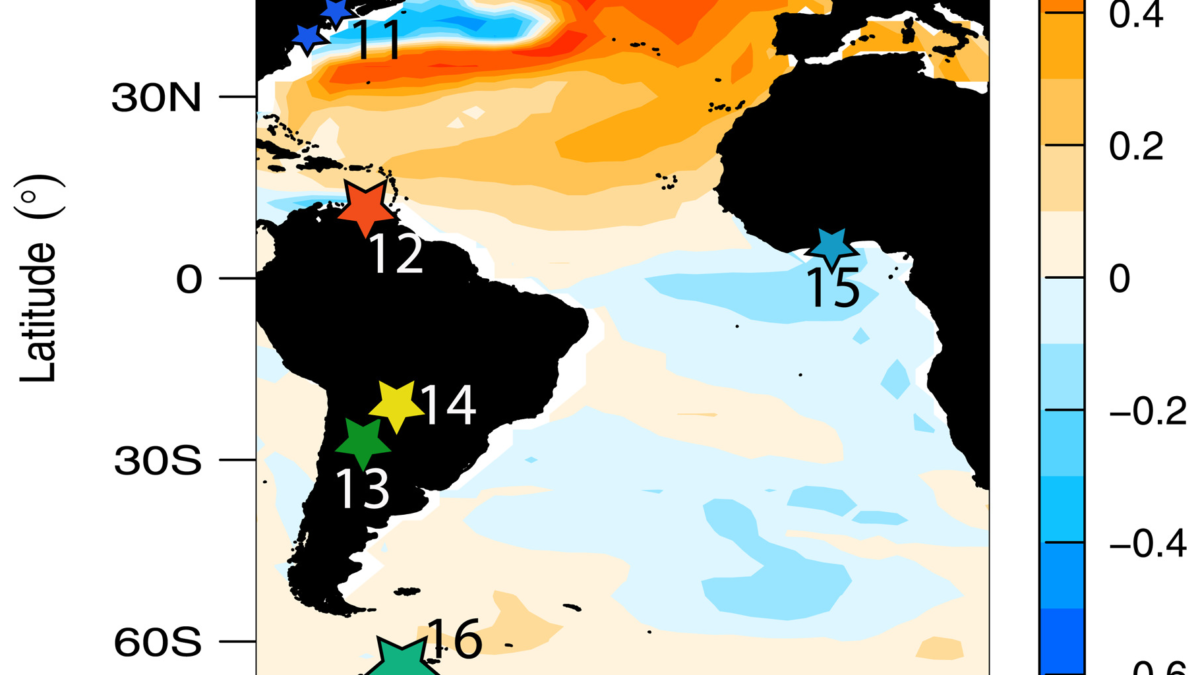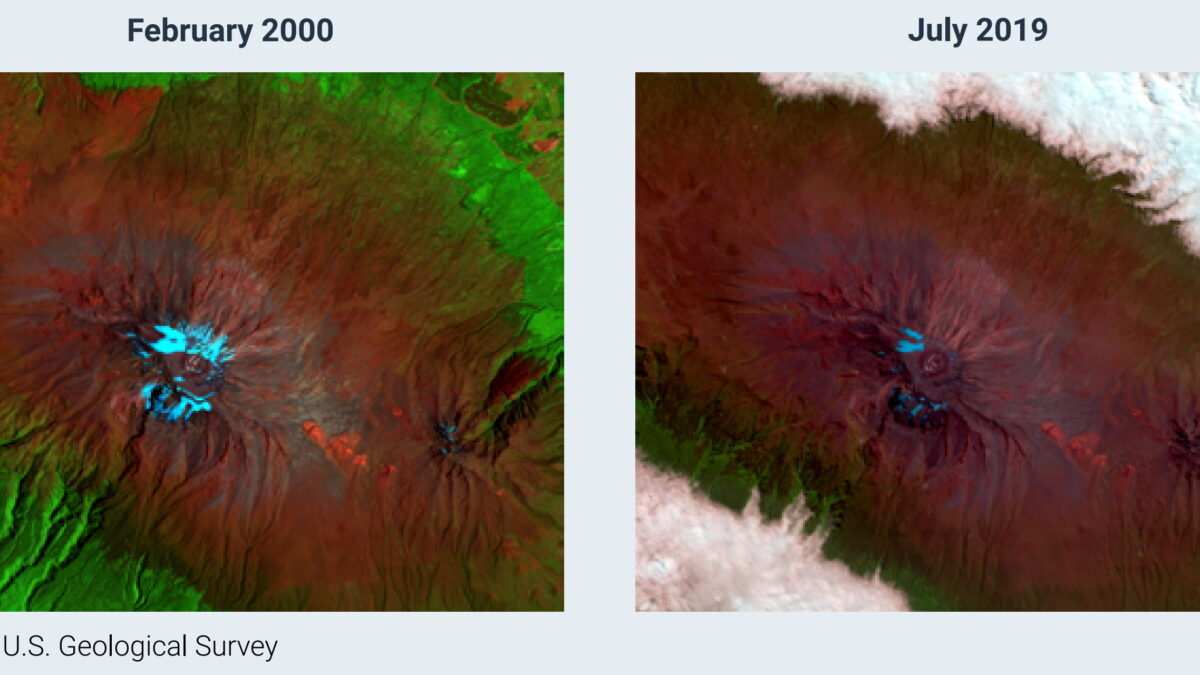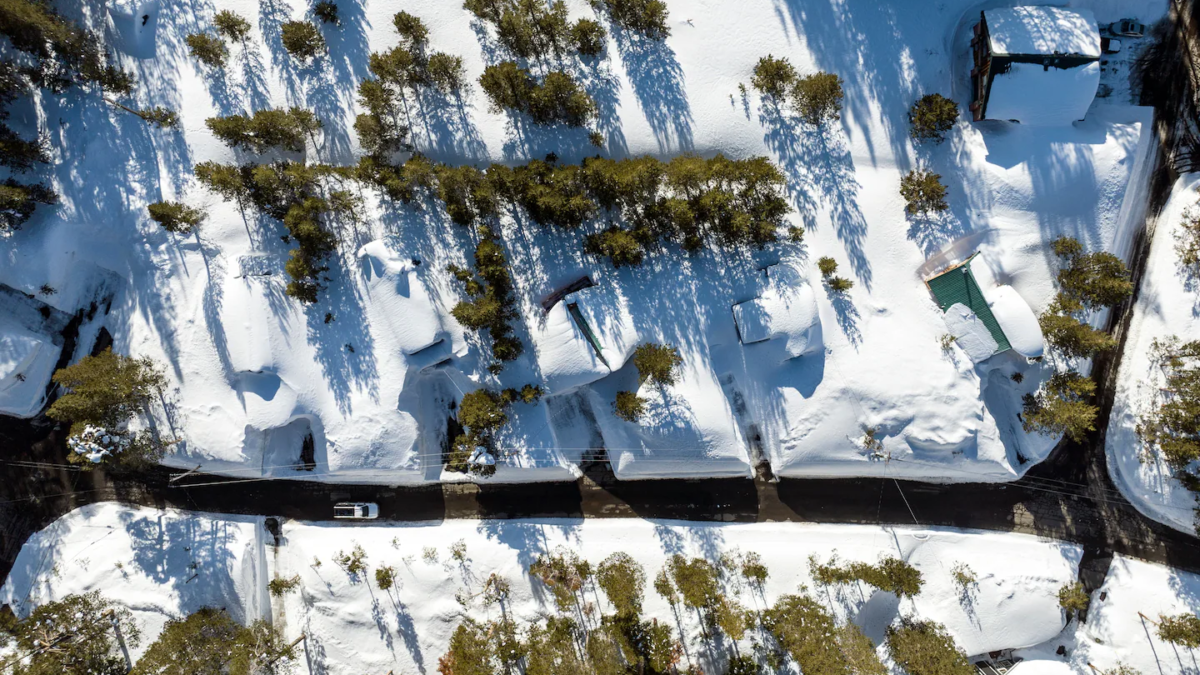Nutrient loading lowers resistance to thermal stress in Florida Keys corals – “These data make clear that this is not an ‘either temperature or nutrients’ situation, but rather a ‘both/and’ combination of multiple stressors”
By Gisele Galoustian
15 July 2019
(FAU) – Coral reefs are considered one of the most threatened ecosystems on the planet and are dying at alarming rates around the world. Scientists attribute coral bleaching and ultimately massive coral death to a number of environmental stressors, in particular, warming water temperatures due to climate change.
A study published in the international journal Marine Biology, reveals what’s really killing coral reefs. With 30 years of unique data from Looe Key Reef in the lower Florida Keys, researchers from Florida Atlantic University’s Harbor Branch Oceanographic Institute and collaborators have discovered that the problem of coral bleaching is not just due to a warming planet, but also a planet that is simultaneously being enriched with reactive nitrogen from multiple sources.
Improperly treated sewage, fertilizers and top soil are elevating nitrogen levels, which are causing phosphorus starvation in the corals, reducing their temperature threshold for “bleaching.” These coral reefs were dying off long before they were impacted by rising water temperatures. This study represents the longest record of reactive nutrients and algae concentrations for coral reefs anywhere in the world.
This analysis indicates that anthropogenic nutrient loading from local sources in the Florida Keys and regionally from the greater Everglades ecosystem is interacting with a changing climate to create conditions unfavorable for living coral.
Lapointe, et al., 2019 / Marine Biology
“Our results provide compelling evidence that nitrogen loading from the Florida Keys and greater Everglades ecosystem caused by humans, rather than warming temperatures, is the primary driver of coral reef degradation at Looe Key Sanctuary Preservation Area during our long-term study,” said Brian Lapointe, Ph.D., senior author and a research professor at FAU’s Harbor Branch.
A key finding from the study is that land-based nutrient runoff has increased the nitrogen:phosphorus ratio (N:P) in reef algae, which indicates an increasing degree of phosphorus limitation known to cause metabolic stress and eventually starvation in corals. Concentrations of reactive nitrogen are above critical ecosystem threshold levels previously established for the Florida Keys as are phytoplankton levels for offshore reefs as evidenced by the presence of macroalgae and other harmful algal blooms due to excessive levels of nutrients.
Researchers gathered data from 1984 to 2014 and collected seawater samples during wet and dry seasons. Lapointe and collaborators from the University of Georgia and the University of South Florida also monitored the living coral and collected abundant species of seaweed (macroalgae) for tissue nutrient analysis. They monitored seawater salinity, temperature and nutrient gradients between the Everglades and Looe Key. They wanted to better understand how nitrogen traveled from the Everglades downstream to the coral reefs of the Florida Keys National Marine Sanctuary, which now has the lowest amount of coral cover of any reefs in the wider Caribbean region.
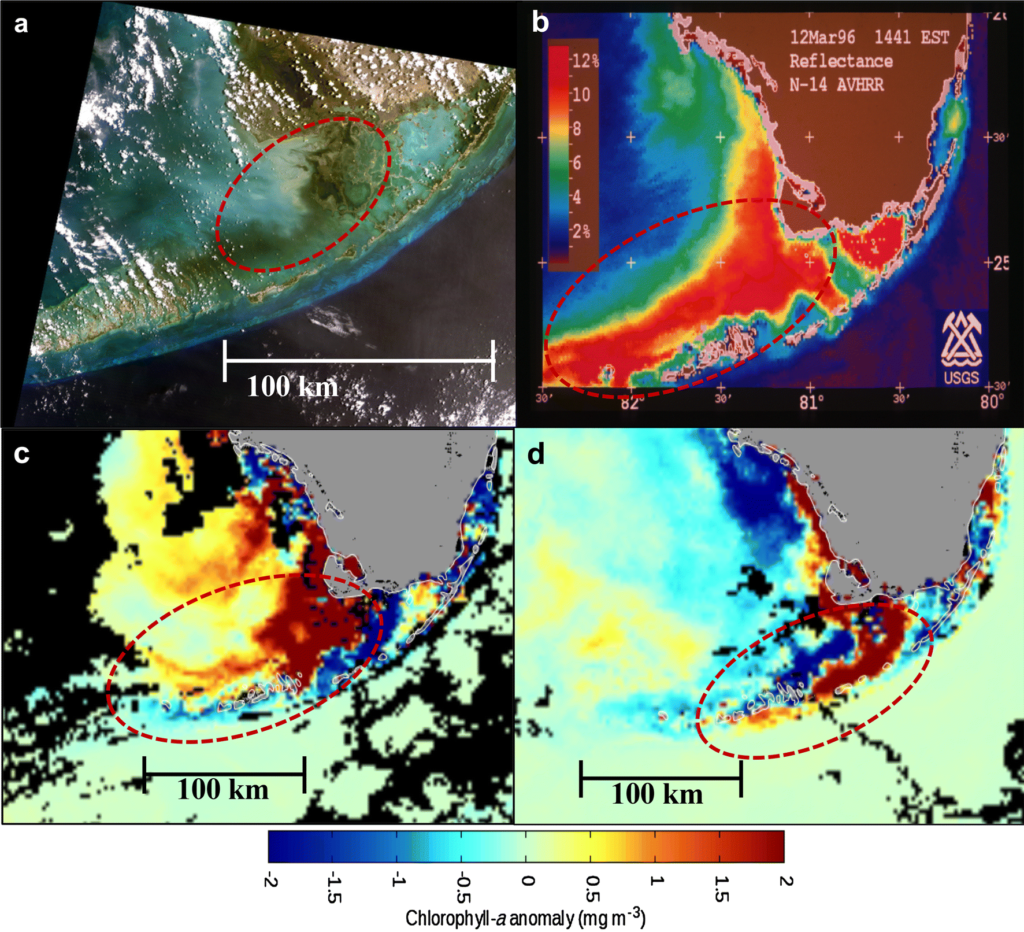
Data revealed that living coral cover at Looe Key Sanctuary Preservation Area declined from nearly 33 percent in 1984 to less than 6 percent in 2008. The annual rate of coral loss varied during the study, but increased from 1985 to 1987 and 1996 to 1999 following periods of heavy rainfall and increased water deliveries from the Everglades. Between 1991 to 1995, significant increases in Everglades runoff and heavy rainfall resulted in increases of reactive nitrogen and phytoplankton levels at Looe Key above levels known to stress and cause die-off of coral reefs. Despite reduced Everglades flows, the water quality has not yet recovered to the levels of the 1980s.
Nitrogen loading to the coast is predicted to increase by 19 percent globally simply as a result of changes in rainfall due to climate change, which suggests the need for urgent management actions to prevent further degradation.
“The future success of the Comprehensive Everglades Restoration Plan will rely on recognizing the hydrological and nitrogen linkages between the Everglades, Florida Bay and the Florida Keys,” said Lapointe. “The good news is that we can do something about the nitrogen problem such as better sewage treatment, reducing fertilizer inputs, and increasing storage and treatment of stormwater on the Florida mainland.”
The impact of local land-based nitrogen contributions from sewage treatment plants that service 76,000 year-round residents and an estimated 3.8 million tourists annually is currently being mitigated by completion of centralized wastewater collection and advanced wastewater treatment plants and nutrient removal facilities throughout the Florida Keys.
According to the Florida Keys National Marine Sanctuary, ocean-related activities associated with coral reefs add more than $8.5 billion each year and 70,400 jobs to the local economy in southeast Florida (https://floridakeys.noaa.gov/corals/economy.html).
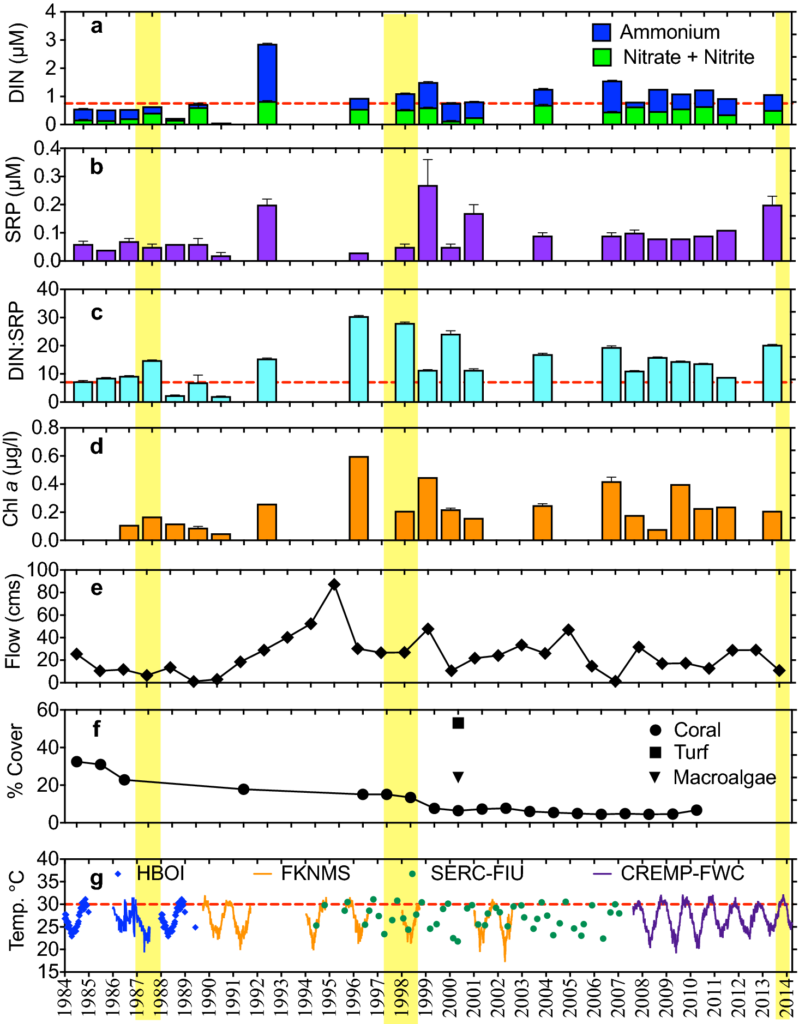
“The Bonaire coral reefs in the Caribbean Netherlands is a great example of effective nitrogen pollution mitigation. These coral reefs are beginning to recover following the construction of a new sewage treatment plant in 2011, which has significantly reduced nitrogen loading from septic tanks,” said Lapointe.
The study’s co-authors are Rachel A. Brewton and Laura W. Herren of FAU’s Harbor Branch; James W. Porter, Ph.D., emeritus professor of ecology at the University of Georgia; and Chuanmin Hu, Ph.D., of the College of Marine Science at the University of South Florida.
“Citing climate change as the exclusive cause of coral reef demise worldwide misses the critical point that water quality plays a role, too,” said Porter. “While there is little that communities living near coral reefs can do to stop global warming, there is a lot they can do to reduce nitrogen runoff. Our study shows that the fight to preserve coral reefs requires local, not just global, action.”
Financial support for the research was provided by the National Oceanic and Atmospheric Administration (NOAA, National Marine Sanctuaries Program), Monroe County, Herbert W. Hoover Foundation, John D. and Catherine T. MacArthur Foundation, United States Environmental Protection Agency (USEPA), National Aeronautics and Space Administration (NASA) ROSES (contract #NNX10AB69G), the “Save Our Seas” Specialty License Plate funds granted through the Harbor Branch Oceanographic Institute Foundation, and the Coastal Ocean Association for Science and Technology (COAST).
Thirty years of unique data reveal what’s really killing coral reefs
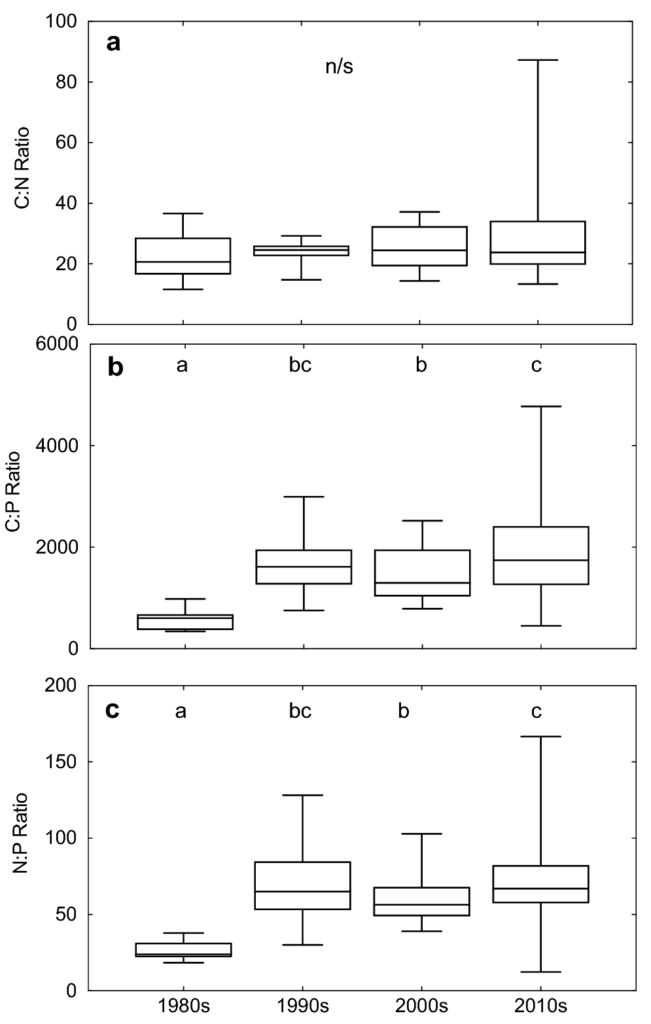
ABSTRACT: Increased loadings of nitrogen (N) from fertilizers, top soil, sewage, and atmospheric deposition are important drivers of eutrophication in coastal waters globally. Monitoring seawater and macroalgae can reveal long-term changes in N and phosphorus (P) availability and N:P stoichiometry that are critical to understanding the global crisis of coral reef decline. Analysis of a unique 3-decade data set for Looe Key reef, located offshore the lower Florida Keys, showed increased dissolved inorganic nitrogen (DIN), chlorophyll a, DIN:soluble reactive phosphorus (SRP) ratios, as well as higher tissue C:P and N:P ratios in macroalgae during the early 1990s. These data, combined with remote sensing and nutrient monitoring between the Everglades and Looe Key, indicated that the significant DIN enrichment between 1991 and 1995 at Looe Key coincided with increased Everglades runoff, which drains agricultural and urban areas extending north to Orlando, Florida. This resulted in increased P limitation of reef primary producers that can cause metabolic stress in stony corals. Outbreaks of stony coral disease, bleaching, and mortality between 1995 and 2000 followed DIN enrichment, algal blooms, and increased DIN:SRP ratios, suggesting that eutrophication interacted with other factors causing coral reef decline at Looe Key. Although water temperatures at Looe Key exceeded the 30.5 °C bleaching threshold repeatedly over the 3-decade study, the three mass bleaching events occurred only when DIN:SRP ratios increased following heavy rainfall and increased Everglades runoff. These results suggest that Everglades discharges, in conjunction with local nutrient sources, contributed to DIN enrichment, eutrophication, and increased N:P ratios at Looe Key, exacerbating P limitation, coral stress and decline. Improved management of water quality at the local and regional levels could moderate N inputs and maintain more balanced N:P stoichiometry, thereby reducing the risk of coral bleaching, disease, and mortality under the current level of temperature stress.
DISCUSSION: The significant long-term changes in DIN availability, N:P stoichiometry, and eutrophication at LKSPA provide compelling evidence that land-based N loading should be considered a major contributing factor to the coral reef degradation at LKSPA. […]
DIN enrichment, P limitation, and coral resistance to thermal stress
Over the 3-decade study, DIN:SRP ratios were much higher at LKSPA compared to lower values between 4.3:1 and 7.2:1 for healthy coral reefs (Smith et al. 1981; Crossland et al. 1984; Furnas et al. 1995), and showed three prominent annual spikes coinciding with the three mass bleaching events on offshore reefs of the FKNMS in 1987 (Fig. 11a), 1997/1998 (Fig. 11b–d), and 2014 (Fig. 11e, f). Whereas peak summer temperatures exceeded the coral bleaching threshold of 30.5 °C (Manzello et al. 2007; Manzello 2015) in many years during the 3-decade study, the three mass bleaching events on offshore bank reefs only occurred in years following major land-based runoff when the DIN:SRP ratios were elevated. The 1987 bleaching event was preceded by increased water deliveries to the Everglades and heavy El Niño rainfall (Table 1). This resulted in DIN enrichment and increasing DIN:SRP ratios up to 57:1 in summer of 1987 at LKSPA, with an annual average of 15:1 for 1987. A higher annual DIN:SRP spike to 31:1 occurred 1 decade later in 1996 following major increases in water deliveries and heavy rainfall in 1994/1995 prior to the mass bleaching in fall of 1997 (Fig. 11b; Table 2). Lastly, a DIN:SRP spike to 19:1 and mass bleaching occurred in 2014 following heavy rainfall in 2013, increased water deliveries associated with the C-111 Spreader Canal Western Project as part of the CERP, and phytoplankton blooms in central Florida Bay that extended south to the lower Florida Keys (Shangguan et al. 2017; Fig. 10d; Table 1). Increases in DIN:SRP ratios result in a lowered resistance of corals to light and temperature-induced bleaching from enlarged (suboptimal) zooxanthellae densities that disrupt the autotrophic energy relations of the coral–algae symbiosis, leading to P starvation (Wiedenmann et al. 2013; D’Angelo and Wiedenmann 2014; Rosset et al. 2017) and reduction of the coral photosynthesis to respiration (P:R) ratio (Wooldridge 2014). […]
The temporal pattern of increasing DIN, DIN:SRP ratios, and chlorophyll a at LKSPA in the 1990s suggests that this period would also have reduced resistance of stony corals to thermal stress and coral bleaching. These findings are consistent with research on the Great Barrier Reef, where high chlorophyll concentrations were associated with DIN enrichment at reef locations characterized by low resistance to thermal stress and coral bleaching (Wooldridge 2009; Wooldridge and Done 2009). Recent research has elucidated the physiological mechanisms through which elevated DIN and DIN:SRP ratios result in P starvation, increasing susceptibility of corals to heat- and light-induced bleaching (Wiedenmann et al. 2013; D’Angelo and Wiedenmann 2014) and death (Rosset et al. 2017). […]
Management implications for increasing N on a warming planet
This long-term record of increased DIN, chlorophyll a, N:P ratios, and P limitation at LKSPA, combined with various remote sensing products, provides compelling evidence for an important role of land-based N enrichment in driving widespread algal blooms, P depletion of surface waters, and coral reef decline. The altered N:P stoichiometry can cause P starvation in corals and exacerbate the effects of high temperature on coral bleaching, disease, and reef degradation. Climate cooling has been hypothesized to have caused the shutdown of reef growth in the Florida Keys over the past 3000–6000 years (Toth et al. 2018). Now, modern climate change and other anthropogenic disturbances, including N enrichment and altered N:P stoichiometry, appear to be pushing reefs past a critical threshold and into the current novel state dominated by turf algae, macroalgae, sponges, and soft corals.
This analysis indicates that anthropogenic nutrient loading from local sources in the Florida Keys and regionally from the greater Everglades ecosystem is interacting with a changing climate to create conditions unfavorable for living coral at LKSPA. […]
These data make clear that this is not an either (temperature) or (nutrients) situation, but rather a “both/and” combination of multiple stressors (Zaneveld et al. 2016; Wang et al. 2018). [more]
